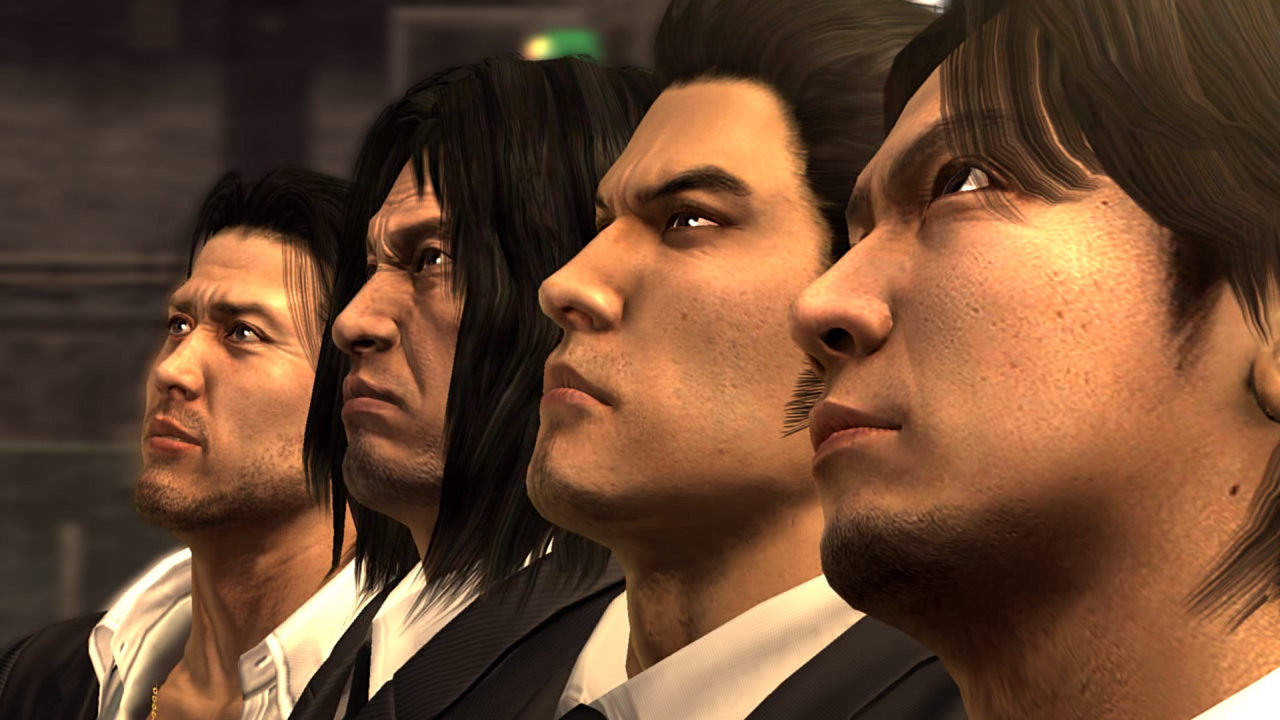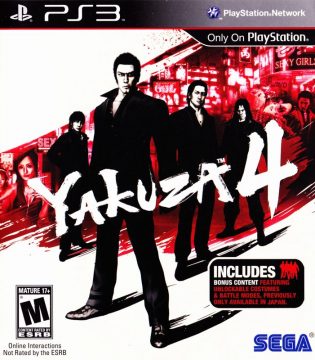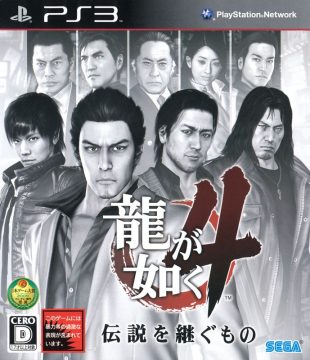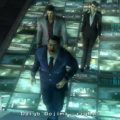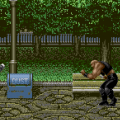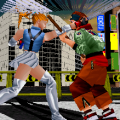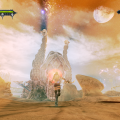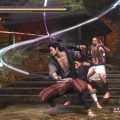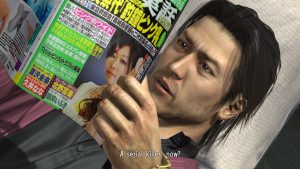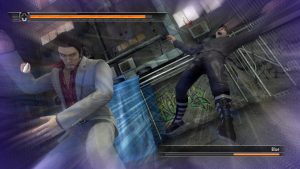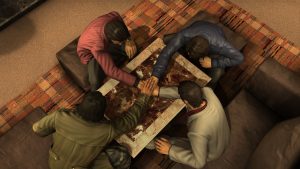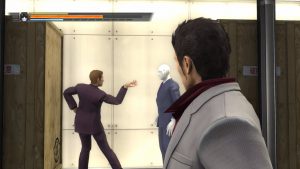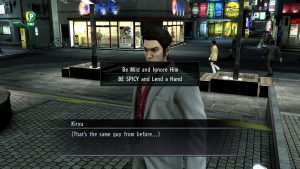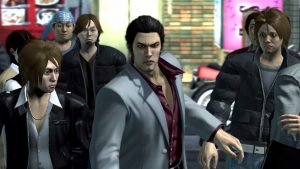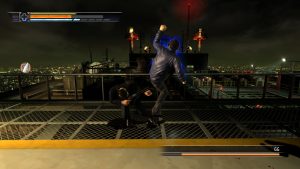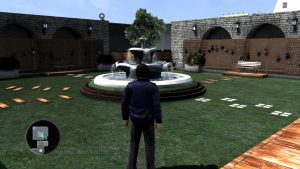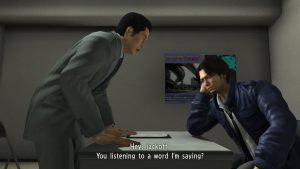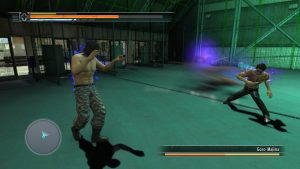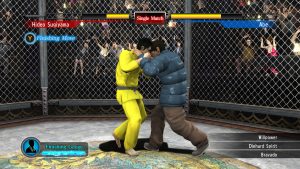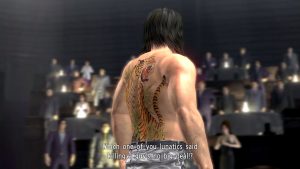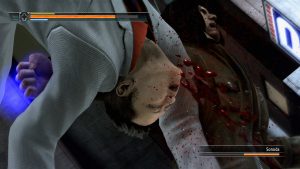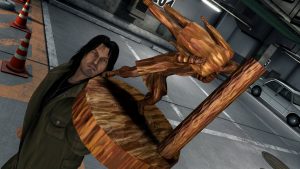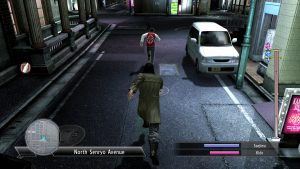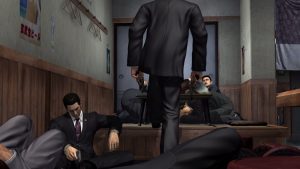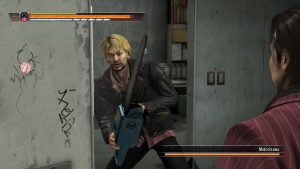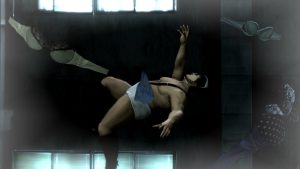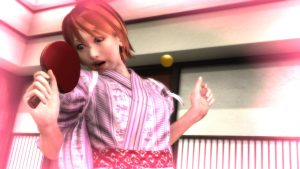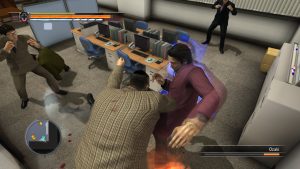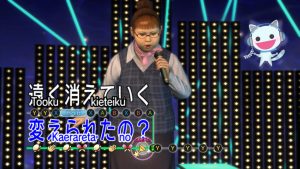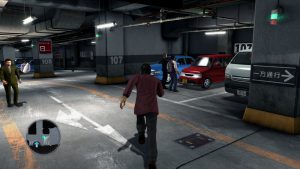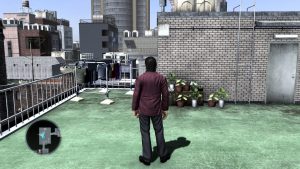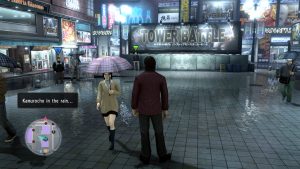Released just a year after Yakuza 3, this entry would be a huge game changer for the franchise, partly by stripping itself down. There’s roughly a quarter less substories, you only get Kamurocho for the game hub, and the runtime is fairly tight at around forty to fifty hours, depending on how engaged you get with the major side activities. All that said, the game introduced a huge element that gave the old formula new life – multiple playable characters.
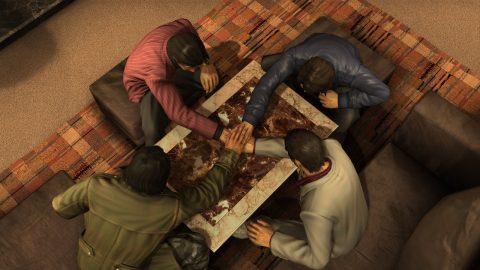
Yakuza 4 brings back Kiryu, of course, but we also get three new heroes in the form of the no-interest money lender Shun Akiyama, rogue beat detective Masayoshi Tanimura, and convicted Tojo Clan member Taiga Saejima. The first story follows Akiyama giving a test to a girl calling herself Lily for a massive multi-million yen loan, while looking into the circumstances of a friend of his who killed a member of the Ueno Seiwa yakuza clan in cold blood. We then go to Saejima, on death row for killing eighteen men of the Ueno Seiwa in ’85, only to escape when Hamazaki from Yakuza 3 becomes a cellmate and reveals that the hit was fishy and lead to the end of his boss’ family.
Tanimura follows up investigating that hit, like his dead father once did, aiming to figure out what happened to him. Kiryu finally ends up joining the fray once the actions of all the previous characters set the dominoes falling as the conflict threatening the Tojo begins to spiral out of control, helped along by a reveal that what’s happening now may be related to the 10 billion yen incident of the first game.
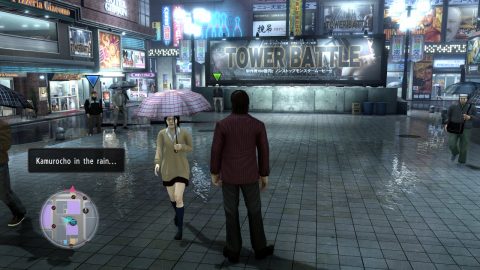
Yakuza 4 feels fresh and polished in a way 3 just can’t manage. It may have felt a tad disappointing to some back in the day for the toned down scale, but it has aged far better than its more girthy contemporaries in 3 and 5. The four characters help with this in flavor and mechanics, each feeling completely unique in how they interact with the city and enemies.
Akiyama introduces rooftops and an underground shopping area. Saejima has to avoid the police via the sewer network and areas populated by the homeless of the district. Tanimura can explore Little Asia, a cramped series of alleyways and cracker box apartments populated by the immigrant community (Tanimura being raised by a Chinese man who runs the area). As for Kiryu, he can go wherever he likes for the most part, due to him being a legend, and also interacts with areas that were important in previous games the other characters don’t even notice, like New Serena (run by detective bud turned journalist and bartender Date) and the Stardust host club. Some characters also won’t do certain activities, like Saejima not being down with hostess clubs or karaoke.
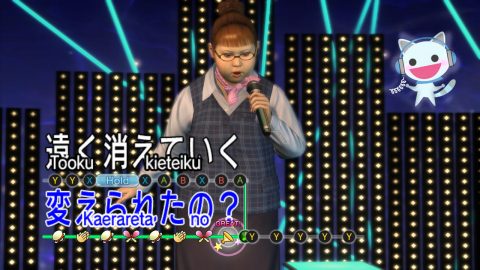
Combat wise, each is extremely unique, helped by basing them on the four gods of Chinese mythology. Kiryu is the dragon, of course, while Akiyama is the bird or phoenix, Saejima the tiger, and Tanimura the tortoise. Akiyama has a very fast, kick combo style, which even lets him cancel his combos and gives a lot of dodge options. He can even regain heat quickly with a mess of taunt options and the ease of which he can juggle enemies he lays limp from knocking them into walls. Saejima is the opposite, using big single strikes he can charge, but lacking any real fitness, and having to make his hits count. Difficult to use initially, with a grueling first chapter, but absolutely devastating once you get the hang of his quirks and start getting upgrades that let him take more hits.
Tanimura ends up with one of the weaker styles in execution, but more due to how it doesn’t vibe well with combat in this particular part of the series. He’s parry and grab focused, and since bosses and certain large enemies can just ignore those actions and his combo ending heat moves as they enter heat phases, you just get left with a subpar rush combo. As a result, he only has one real boss. Even the end of the game sticks him with a cowardly pot shot weakling boss ala Yakuza 1‘s climax fight, complete with heavily armed and very aggravating enemies. There’s fun to be had with regular enemies, but he has to put too much work into harder fights to be that enjoyable compared to the monsters he’s paired up with. If you want to see his style done better, check out Lost Judgment. As for Kiryu…he’s Kiryu! He gets his stuff from the previous games and not much else, because he doesn’t really need anything else at this point.
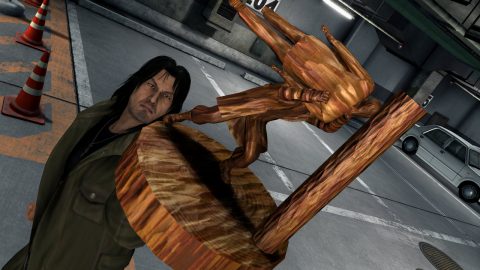
The story at the heart of the game is fantastic, and arguably one of the best the series has ever had. It doesn’t have extremely memorable rival style antagonists like 2, 0, or Ichiban’s adventures, but everyone has a lot of depth to them and interacts with the ongoing story in ways that really fuel the drama engine in a satisfying way. Even the mustache twirling lead villain, who has no depth whatsoever, still works in how he fits the core themes of selfish acts and spiraling consequences. Twist and turns never stop coming at you once you get to the tail end of Akiyama’s story, and the main cast all interact with that story in interesting ways.
Tanimura and Kiryu end up getting the short end of the stick, though, partly due to the story structure. Tanimura’s part leaves little time to develop or define his personality because it has to speed through the core conspiracy reveals so we’re up to speed when Kiryu gets his own bombshells. Kiryu also doesn’t get a lot to do, mainly just clashing with two of the other leads in a fan service fight, then pounding an entire yakuza clan into the dirt (as he does). The last chapter thankfully wraps up on a strong note, quick and concise, with everyone getting a fitting final battle.
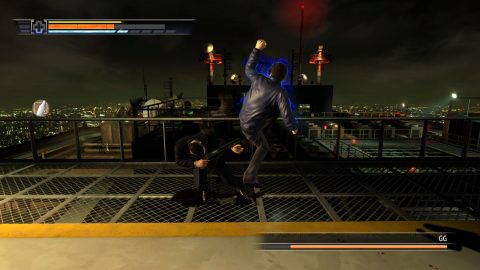
Each character gets roughly fifteen substories, a satisfying amount that’s free of ones locked behind hostesses (outside having to do a trip or two for a questionnaire for Akiyama, Tanimura, and Kiryu). They also each get one major side activity, but none of them are particularly great this go around. Akiyama and Saejima get theirs very late in their stories, at extremely dramatic and awkward times. They also get the boring sim games, Akiyama getting a barely changed hostess maker from 3, and Saejima getting a fighting trainer mode inspired by the likes of Princess Maker (complete with schedule system). Tanimura gets a police scanner as a challenge delivery system that wears out its uniqueness fairly quickly, while Kiryu gets gang encounters. They’re mainly an excuse for a fairly weak substory narrative and some fairly easy minibosses.
We do better with trainers. Akiyama ends up getting harassed by a combat addict named Saigo, a ridiculous man who’s training includes running away from live gunfire. It creates some fun bits, though bringing health items is highly recommended. Saejima helps out an old man dig some tunnels and gets combat manuals, usually leading to goofy challenges of punching falling rocks. Tanimura gets a solid side case with an overseas lady detective he can spar with, ending up to be a solid nod to Yakuza 2‘s plot. As for Kiryu, he just gets some buffs from Komaki due to Komaki having already taught him his entire style, and also gets chewed out for stopping his revelations blog.
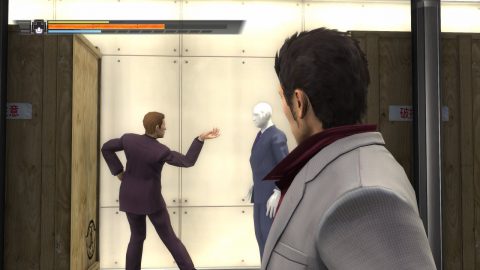
Speaking of which, everyone gets some more revelations cutscenes here, but you can already feel the team starting to run out of steam on the concept when you start seeing scene repeats as you go from character to character. Weapon modding is also more of a pain, as getting materials for good weapons has become more difficult with the new structure. Everyone gets four chapters, leaving little room to squeeze in chances at rare crafting material. It really only comes into play in the last chapter, as everyone pools their inventory and money.
The leveling system is a welcome improvement this go. We now have an orb based system, as every level up gives some base stat upgrades, along with a set amount of orbs you can spend on select moves or passive benefits. A few require certain moves to unlock, but for the most part, you can pick whatever you find most important for your play style first. This might be overwhelming for less experienced players, but vets will be very happy how soon you can get the major style defining moves for each character. Sadly, 5 would return to the old system (though with the 4 “levels” tacked on to make level caps), 0 would create a grid, we’d get a worse version of this system come 6, before we’d get the Judgment series handling the idea again and nailing it with Lost Judgment.
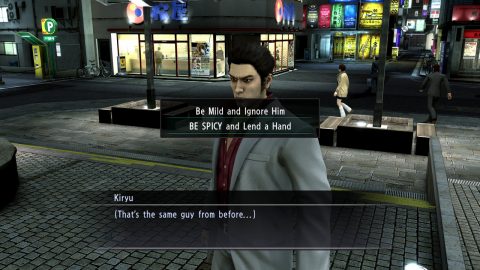
Presentation is a step up, with some of the funkiness of Kenzan and 3’s graphics ironed out, creating less odd looking character models. We also have a very strong soundtrack on our hands, with a unified sound based around jazz and grungy rock. The production and mixing is much stronger, with more lush and harsh soundscapes as needed. Standouts include the tension music Whiskey and Rhapsody, the more manic variant of Nervousness, and Naile’s theme from Tanimura’s trainer sparring. We even get new karaoke tracks, including the blistering Machine Gun Kiss, an aggressive rock song you will be shocked to learn has the goofiest love song lyrics you have heard in a hot minute.
Each of the leads also gets a unique battle theme to express them. Akiyama gets a smooth yet energetic piece called Speed King that perfectly fits his suave nature hiding his blistering fighting prowess. Saejima gets the fittingly explosive Massive Fire, matching his sheer power with a large and aggressive sound. Tanimura’s Infinite Handcuff sounds like it’s about to fall apart at the seams, but still running along as things are clearly getting out of hand. It matches his attitude and the situations he finds himself in due to that quite nicely. As for Kiryu, he gets The Myth, which is self-explanatory at this point, down to its use of similar sounds from the PS2 era music. We also get some killer boss themes to boot, with Majima’s best theme in the series via Receive and Bite You, one of his boys getting the wacky All My Pride, and even a Sonic series style instrumental and orchestral version of the main theme for the last fight. That main theme, For Faith, is also kind of hilarious, as it is sung entirely in English, despite not sounding English at all.
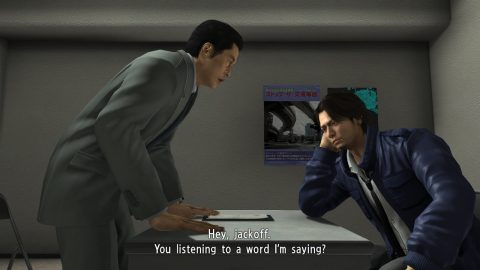
As far as the remaster version goes, it’s pretty much a faithful uplift of the original game with a new localization, like 3. However, there is one huge change with Tanimura, who was recast and given a new design. This is because he was originally based on his first actor, Hiroki Narimiya, who retired from acting in 2016 when tabloids reported he had been using cocaine, a major no-no in the industry there, so much so that an arrest and later admission by Pierre Taki to its use lead to the end of his career. Ironically, Taki was the actor for a major character in Judgment, which had a substory seeming to commentate on the Narimiya situation via an actor’s career put in jeopardy with a friend setting him up to look like he had sex with a minor. Statements by Narimiya suggested he was “betrayed by a friend I have trusted from the bottom of my heart” and that he could “no longer last, thinking that my privacy will continue to be exposed due to someone’s malicious intent,” mirror the substory.
This is worth addressing because there’s some speculation that Tanimura’s absence in the series, especially in 6, which burnt down his neighborhood twice, was due to this controversy, but the timeline suggests that his absence was more due to him being the least popular of the new characters. Yakuza 6 released almost on the same day Narimiya retired, with only one week of the original story in tabloids before that. There was no chance he was in that entry at any point and removed due to this controversy.
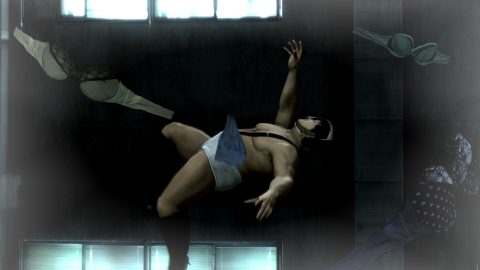
Besides all that, most side stuff is stuff we’ve seen before (plus a horny ping pong minigame with a mechanic where you stare at a girl’s boobs to build heat), the focus instead went to wrangling everything 3 did and making it more compact and satisfying. The experiment was a success, and Yakuza 4 would mark the start of the multiple protagonists era, lasting until 0 for the core entries. This one switch up was the breath of fresh air the team needed, and they ended up really gunning up for the next few games.
That would result in a western focused zombie spin-off that flopped, and the gargantuan 5, but before we get to those, we need to take a pit stop and talk about a certain Mad Dragon.
